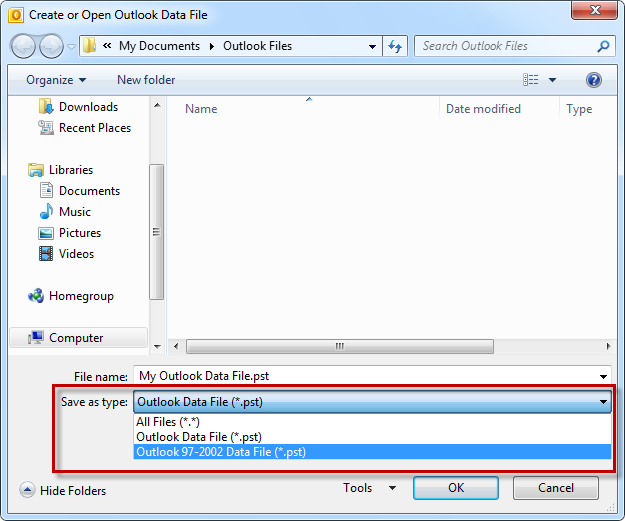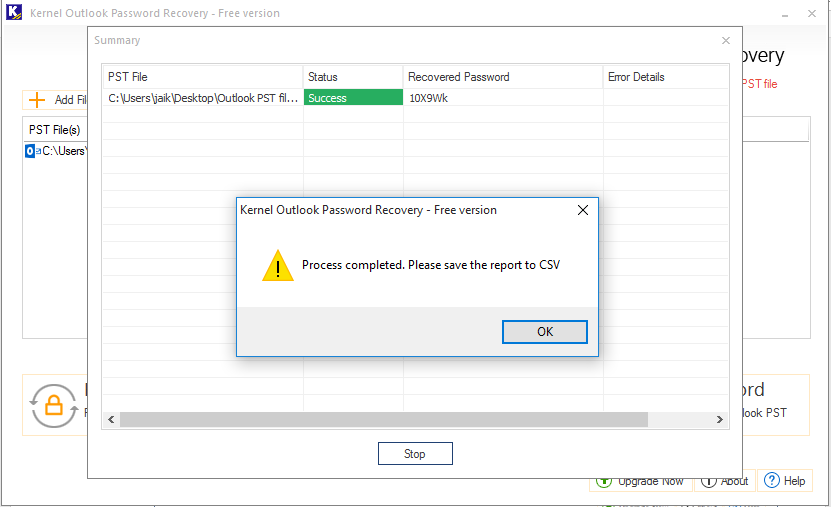Recover Pst File Outlook 2010
Posted By admin On 23.12.19
With today’s use of e-mail you almost can’t afford to lose a single e-mail so let alone your entire mail archive, Calendar items and Contacts. This guide is all about backing up and restoring your Outlook Data.

It describes various methods and explains which method is best to be used in which scenario. Backup and restore POP3 data When you use a POP3 account, all your Outlook data (emails, contacts, calendar, tasks and notes) is stored locally on your PC inside a pst-file.

Your recommended backup strategy is to regularly make a copy of your pst-file to your backup location when Outlook is closed. Your recommended restore strategy is to rename the current pst-file (if still available) and then restore the pst-file from your backup location to its original location. This whole process is explained in further detail in the. There are also various available to automate the process of backing up your pst-file on a regular basis.
If you only want to backup a select amount of folders, you can use the method. You can also choose to. Backup and restore IMAP data When you use an IMAP account, your Outlook data is either stored in a pst-file, an ost-file or a combination thereof. This can make it somewhat complex to properly backup both your emails and other data such as Contacts, Calendar and Tasks for IMAP accounts.
Your emails and email folders are stored on the IMAP server and are synched with Outlook which stores them in a local cache file on your computer. Outlook 2007 and Outlook 2010 Your mail cache is stored inside a pst-file. Outlook 2013, Outlook 2016, Outlook 2019 and Office 365 Your mail cache is stored inside an ost-file. You can lookup the location and name of the pst- or ost-file as explained in the section:. Your other data (Contacts, Calendar, Tasks and Notes) are not stored on and synched with the IMAP mail server as the IMAP protocol only supports synching emails.
Recover Deleted Pst File Outlook 2010
Outlook 2007 and Outlook 2010 Your Contacts, Calendar, Tasks and Notes are stored inside a separate additional pst-file. Outlook 2013, Outlook 2016, Outlook 2019 and Office 365 Your Contacts, Calendar, Tasks and Notes are stored inside the same ost-file but Outlook can be configured to as well (recommended). Recommended backup strategy for IMAP In general, your recommended backup strategy for email is to rely on the backup and retention methods in place by the company hosting your IMAP account.
Therefor, when this is not the company you work for, make sure you have a trustworthy mail provider and make yourself aware of their backup and restore services and capabilities. Your recommended backup strategy for your Contacts, Calendar, Tasks and Notes folders stored within a pst-file is similar to that of a POP3 account;. When you have Outlook 2013, 2016, 2019, or Office 365 configured to store your Contacts, Calendar, Tasks and Notes within the ost-file, the recommended backup strategy is to regularly. Alternatives are;. Switch to a reliable mail provider. Both and have an excellent track record.
Outlook.com has the added benefit that it can also synch your Contacts, Calendar, Tasks and Notes folders as it is an and not an IMAP account which greatly simplifies the backup and restore process and capabilities. on a regular basis. However, be aware these can’t be restored under all circumstances (see the restore section below). Recommended restore strategy for IMAP As mentioned before, when using IMAP, you’d normally rely on the company hosting your IMAP account to make sure your mail data remains available and that individual items can be restored. Therefor, the recommended restore strategy for IMAP mail is to use the methods or processes provided by your provider to restore your mailbox or individual items. When you have a corrupt local mail cache, the recommended restore strategy is to rename the ost-file or pst-file that contains the cache of your IMAP data to.old when Outlook is closed.
Upon restarting Outlook, Outlook will create a new local cache file containing all the data from the IMAP mail server. When you have stored your Contacts, Calendar, Tasks and Notes data inside a separate pst-file (as recommended), then your recommended restore strategy is to rename the current pst-file (if still available) and from your backup location to its original location. When you have stored your Contacts, Calendar, Tasks and Notes data inside the ost-file of your IMAP account, then you’ll have to. Note: When you only have the ost-file pst-file of your IMAP account and wish to restore that, see the section. Backup and restore Exchange or Outlook.com data When you use an Exchange account (Outlook.com accounts are Exchange accounts as well), all your Outlook data (emails, contacts, calendar, tasks and notes) are cached locally on your PC inside an ost-file. If the above process fails, you can try a third party recovery tool to convert your ost-file into a pst-file.
Exporting and Importing data It’s a general misconception that an export of your mail is a good backup. This misconception gets even bigger when you start the export process and see that the default name of the file to export to is backup.pst. Similarly, an import of your data isn’t a proper restore either.
The reason that an export isn’t a backup and that an import isn’t a restore, is because you will lose data during this process, even if you configure it to export or import all the folders and subfolders. Amongst others, the following data gets lost during an export or import:. Custom forms. Custom views. Message Rules.
Folder properties like AutoArchive settings. Send/Receive history for POP3 accounts. AutoComplete cache. An export of your pst-file to another pst-file can be seen as a selective backup since during the export you can choose which data you want to backup. This is handy if you see no need in backing up the entire pst-file like the “Sent Items” folder or the “Funny Forwards” folder (who doesn’t have one of those?) which can get quite big over time and you might consider them as not important enough to backup.
Missing Pst File Outlook 2010
Are you looking for a way to save your emails as pdf-files? In Windows 10, you can do this by using the “Microsoft Print to PDF” printer. For a lot more flexibility, you can also use the by Sperry Software (discount code: BH93RF24 ). For other alternatives see:. Backup Tools The Personal Folders Backup download creates backup copies of your.PST files at regular intervals, making it easy to keep all of your Outlook folders safely backed up.
Retrieve Pst Files In Outlook
Although the download site states that it works up to Outlook 2007, it actually still works for Outlook 2010 as well. However, to make this add-in work for Outlook 2010 as well, you must set a Registry value as discussed in the guide; This free add-in from Tom Hoffmann offers similar functionality as the original backup add-in from Microsoft. It is also compatible with the 64-bit and Office 365 (Click to Run) version of Outlook 2013 and Outlook 2016. I created this script in order to be able to schedule Outlook pst-file backups by using a Scheduled Task in Windows. It will make sure that Outlook is closed before making a backup so the backup doesn’t fail. Full instructions to create the Scheduled Task are provided and no coding skills are required to use this script.